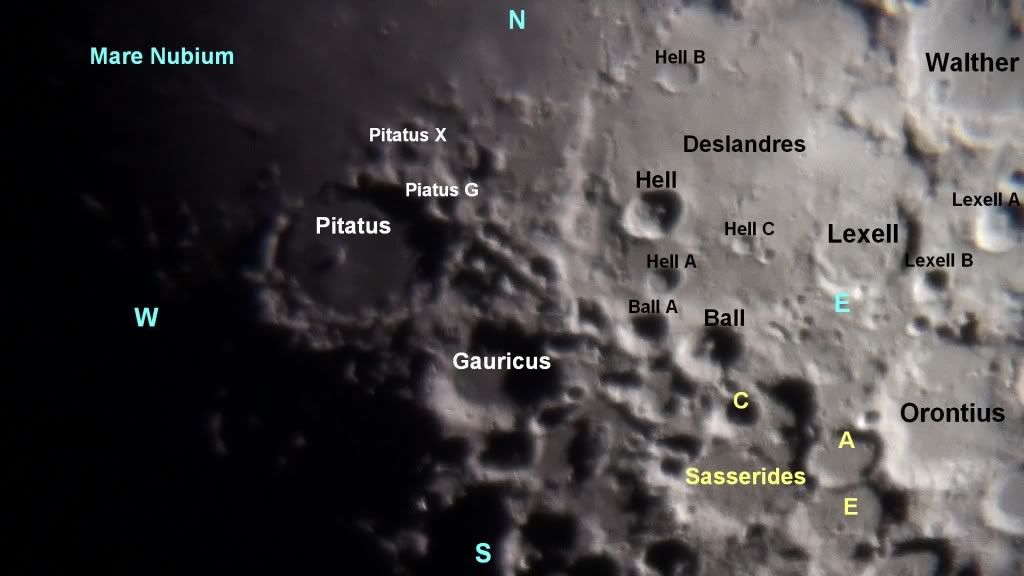Photographer: Victor Lupu
Optics: Celestron C8-Newtonian telescope, plossl 20mm, 2x Barlow
Mount: CG5 (EQ5)
Device: Sony CX105 at 9x optical zoom
Total magnitude: 900x
Filter: No
Date: 11/05/2011
Location: Baia Mare, Romania
Processing: Sony Vegas 10 captures video
Optics: Celestron C8-Newtonian telescope, plossl 20mm, 2x Barlow
Mount: CG5 (EQ5)
Device: Sony CX105 at 9x optical zoom
Total magnitude: 900x
Filter: No
Date: 11/05/2011
Location: Baia Mare, Romania
Processing: Sony Vegas 10 captures video
Sasserides (90 km), is a remnant of a lunar crater and is situated in the south of the Moon on crater Tycho's north and west of Orontius. The above images are turned backwards, as seen by a telescope.North is below and south is up.
This crater was so damaged and destroyed, that is hardly recognizable as a crater. Only a short section of the southwestern edge survived, the rest being overlapped or modified by the impacts of different sizes. The most notable of these is an arc of craters along the northern edge Sasserides consisting in P (21 km), G and C.
Sasserides was named after Gellio Sasceride (Sasserides) (1562-1612), a Danish astronomer and doctor.
Gauricus (79 km), has the floor is very visible in these photos.
This crater was so damaged and destroyed, that is hardly recognizable as a crater. Only a short section of the southwestern edge survived, the rest being overlapped or modified by the impacts of different sizes. The most notable of these is an arc of craters along the northern edge Sasserides consisting in P (21 km), G and C.
Sasserides was named after Gellio Sasceride (Sasserides) (1562-1612), a Danish astronomer and doctor.
Gauricus (79 km), has the floor is very visible in these photos.




 Saturday, August 20, 2011
Saturday, August 20, 2011
 Unknown
Unknown





 Posted in:
Posted in: 


0 comments:
Post a Comment